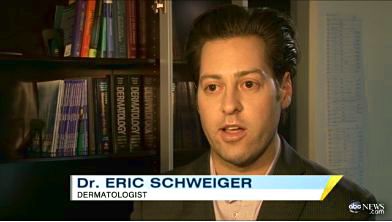An article in the New York Times discusses research surrounding a potential new hair loss treatment. The NY Times’ article “Old Transplant Drug May Have A Fringe Benefit” states that an immunosuppressant used to prevent organ rejection in those having liver, kidney or heart transplants also stimulated hair growth.
First prescribed in the 1980’s it is now used for the treatment of many diseases including rheumatoid arthritis and psoriasis. Nathan Hawkshaw, at the University of Manchester found that cyclosporine A stops the production of a protein that inhibits the growth of some tissues, one of them being hair follicles.
What was important to the first patients who took cyclosporine A was that it made their bone-marrow transplants work; few reported the increased luster of their hair. Now scientists think the drug may hold the key to an effective treatment for baldness.
Patients began using cyclosporine A in the Eighties and it is now prescribed for dozens of conditions, including rheumatoid arthritis. Like all immunosuppressants it has serious side-effects, so hirsutism (increased body hair) was never considered a big downside. And neither was it seriously considered an upside.
Increasing your vulnerability to infection to reverse hair loss is not a risk many would take. But a team at the University of Manchester think they have found a way to mimic the hair promoting effects without the serious consequences.
Nathan Hawkshaw, then a PhD student, found that the drug decreased production of the protein SFRPI, which acts as a brake on the growth of some tissues, among them hair follicles. He and his colleagues then learned that another compound already existed that was designed to target SFRPI – and not do much else.
In a paper in Plos Biology they wrote that the compound enhanced follicle growth better than cyclosporine A, and Dr. Hawkshaw believes that this could work as a topical hair treatment. However, since the test follicles were healthy, it is not known whether actual balding could be reversed.
If the compound turns out to be safe and effective, it will still take several years to make it onto the market.
- Read the original article in The Times of London
- Read about Medical Treatment options at Bernstein Medical



 A double-blind scientific study published in the May 2012 issue of the Journal of the American Academy of Dermatology has found that latanoprost, a drug that mimics naturally-derived compound molecules called prostaglandins, significantly increases hair density on the scalp after 24 weeks of treatment in young
A double-blind scientific study published in the May 2012 issue of the Journal of the American Academy of Dermatology has found that latanoprost, a drug that mimics naturally-derived compound molecules called prostaglandins, significantly increases hair density on the scalp after 24 weeks of treatment in young  The January 2012 issue of the Journal of Drugs in Dermatology contains an article, written by Drs. Schweiger and Bernstein, which is the first case study of eyebrow growth from the topical use of bimatoprost.
The January 2012 issue of the Journal of Drugs in Dermatology contains an article, written by Drs. Schweiger and Bernstein, which is the first case study of eyebrow growth from the topical use of bimatoprost.




